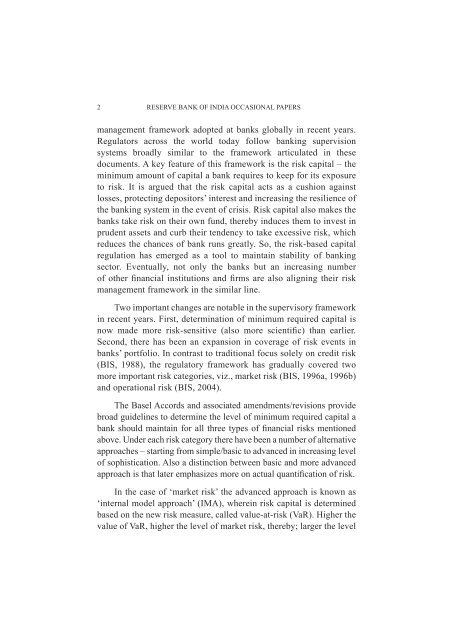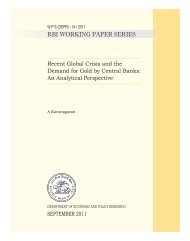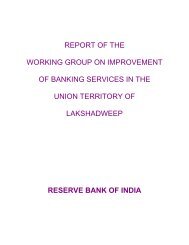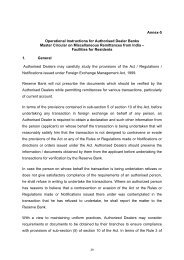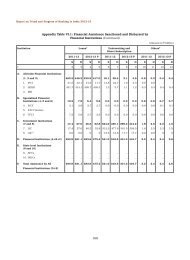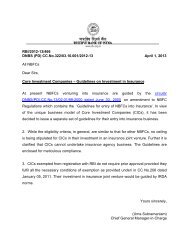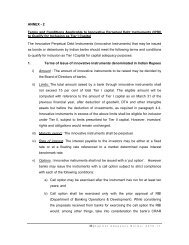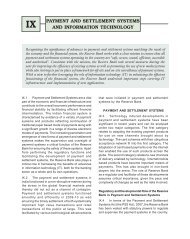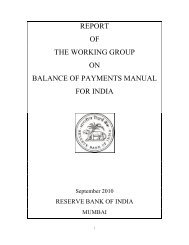Measuring Market Risk - Reserve Bank of India
Measuring Market Risk - Reserve Bank of India
Measuring Market Risk - Reserve Bank of India
You also want an ePaper? Increase the reach of your titles
YUMPU automatically turns print PDFs into web optimized ePapers that Google loves.
2 RESERVE BANK OF INDIA OCCASIONAL PAPERS<br />
management framework adopted at banks globally in recent years.<br />
Regulators across the world today follow banking supervision<br />
systems broadly similar to the framework articulated in these<br />
documents. A key feature <strong>of</strong> this framework is the risk capital – the<br />
minimum amount <strong>of</strong> capital a bank requires to keep for its exposure<br />
to risk. It is argued that the risk capital acts as a cushion against<br />
losses, protecting depositors’ interest and increasing the resilience <strong>of</strong><br />
the banking system in the event <strong>of</strong> crisis. <strong>Risk</strong> capital also makes the<br />
banks take risk on their own fund, thereby induces them to invest in<br />
prudent assets and curb their tendency to take excessive risk, which<br />
reduces the chances <strong>of</strong> bank runs greatly. So, the risk-based capital<br />
regulation has emerged as a tool to maintain stability <strong>of</strong> banking<br />
sector. Eventually, not only the banks but an increasing number<br />
<strong>of</strong> other financial institutions and firms are also aligning their risk<br />
management framework in the similar line.<br />
Two important changes are notable in the supervisory framework<br />
in recent years. First, determination <strong>of</strong> minimum required capital is<br />
now made more risk-sensitive (also more scientific) than earlier.<br />
Second, there has been an expansion in coverage <strong>of</strong> risk events in<br />
banks’ portfolio. In contrast to traditional focus solely on credit risk<br />
(BIS, 1988), the regulatory framework has gradually covered two<br />
more important risk categories, viz., market risk (BIS, 1996a, 1996b)<br />
and operational risk (BIS, 2004).<br />
The Basel Accords and associated amendments/revisions provide<br />
broad guidelines to determine the level <strong>of</strong> minimum required capital a<br />
bank should maintain for all three types <strong>of</strong> financial risks mentioned<br />
above. Under each risk category there have been a number <strong>of</strong> alternative<br />
approaches – starting from simple/basic to advanced in increasing level<br />
<strong>of</strong> sophistication. Also a distinction between basic and more advanced<br />
approach is that later emphasizes more on actual quantification <strong>of</strong> risk.<br />
In the case <strong>of</strong> ‘market risk’ the advanced approach is known as<br />
‘internal model approach’ (IMA), wherein risk capital is determined<br />
based on the new risk measure, called value-at-risk (VaR). Higher the<br />
value <strong>of</strong> VaR, higher the level <strong>of</strong> market risk, thereby; larger the level


